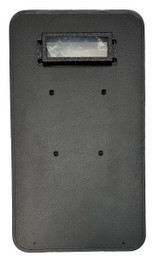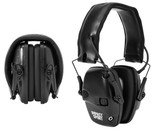Knowing This About Ballistic Shields Can Be Lifesaving
Knowing This About Ballistic Shields Can Be Lifesaving
Ballistic shields are among most vital bullet-resistance equipment. Unlike wearable body armor, ballistic shields are a hand-held protective device that provides additional coverage when held. Depending on material of the shield and its design, it offers full size or partial protection from shots, projectiles and ricochets.
Needless to say, you must pay a lot of attention when selecting a particular model and mark of ballistic shield you are going to use. After all, your life and well-being depends on it. So, what are ballistic shields and what should you know about them?
What are ballistic shields
Ballistic shields are special bullet-resistant equipment designed to provide coverage to a wearer. Shields as an armor type are extremely old, going back to Greek, Ancient Egypt or Vikings where soldiers were using shields along with spears, axes or gladiuses. Since then, the role of piercing and slashing bladed weapons has reduced, but shields still remain important. Today, they protect soldiers and policemen mainly from ballistic weapons and fragmentation damage.
Importantly, you should not confuse ballistic shields designed to protect from ballistic threats with riot shields that only offer basic physical protection and are used for crowd control. Riot shields are not intended to protect you from shots and must not be used as a replacement for certified ballistic shields.
Who needs ballistic shields
While virtually anybody can purchase a ballistic shield today – it is 100% legal after all, the range of professions who really need to use a ballistic shield is limited to police and law enforcement officers, security guards, military, armed forces and SWAT.
Indeed, the purpose of the shield is to provide maximum coverage to a wearer while allowing him to act and remain as mobile as possible. Unlike body armor, ballistic shield do not traumatize its wearer even if hit, hence providing better protection.
Typical uses of ballistic shields include:
- Tactical operations
- Approaching an armed criminal
- Armed assault
- Hostage recovery
- Forced breach
- Holding a perimeter around an objective
- Protecting a territory or an enclosure
- Patrolling
- Take-down operations
- Criminal fire suppression
- Deliberate entry
Are ballistic shields bullet-proof?
To answer this question, we need to open the National Institute of Justice standard 0108.01 that certifies several protection levels for ballistic shields. Note that none of the protection levels means bulletproof capabilities of a ballistic shield. In fact, you should not even think of this type of armor as “bulletproof” because in fact it is not. A ballistic shield is merely bullet-resistant. It provides protection against certain types of threats and is guaranteed to withstand that type of ammo. But there are no shields or armor that can make you bulletproof as in “protect from any kind and number of shots altogether”.
What are ballistic shield armor classes?
The NIJ standard certifies the following protection classes for ballistic shields:
- Level II. This minimum protection level guarantees that a shield can withstand 5 shots of 9 mm or .357 Magnum bullets, without through penetration.
- Level IIIA. This is the most common protection level that guarantees to stop higher speed 9 mm rounds as well as protects against .44 Magnum, at least 5 shots also.
- Level III. Above average protection that guarantees that a shield can withstand 5 rifle shots of 7.62 mm or .308 Winchester.
- Level IV. The highest level of protection. The NIJ standard certifies shields to protect a wearer against one shot of armor piercing ammunition such as .30-06 or 7.62 AP.
As you see, the variety of bullets a ballistic shield can deal with greatly depends on the NIJ protection level of the shield. That’s why knowing the NIJ rating of the shield is the most important parameter you should always consider.
Importantly, every shield is only certified against a specific number of shots. This means that a shield is guaranteed to withstand 5 shots (Level II-Level III). More hits are not guaranteed to stop. However, in real world, the shield remains functional even after these first 5 shots. But you really should not treat it as reliable after that.
What are common materials of ballistic shields?
Ballistic shields are made of various materials. Most common of them are:
- Polyethylene. A special polymer of ultrahigh molecular weight can stop even high-speed bullets thanks to extremely high viscosity of hard-to-tear polyethylene fibers. The bullet slows down while the shield material redistributes the energy of the impact and converts it to heat.
- Kevlar, Aramid, and other synthetic fibers. Aramid fibers are extremely hard to tear, so they do a great job of stopping bullets hitting the ballistic shield. Some shields are purely synthetic, others use a combination of various materials.
- Metal. Steel ballistic shields are simple and affordable while still practical for many purposes. Their weight is the main disadvantage. At the same time, steel requires little to no maintenance and is durable as hell.
- Polycarbonate. Layered polycarbonate is a synthetic material that expresses unique hardness combined with transparency and low weight. This material is often used for Level II and Level IIIA shields. Higher protection classes quickly become impractical, because the thickness required to stop high-speed bullets makes polycarbonate ballistic shields too bulky.
Types of ballistic shields
Choosing a ballistic shield is all about finding the right type of the armor depending on the potential usage scenarios. Aside from NIJ classification and material, you should also take into account the type of the ballistic shield.
Here are some typical examples of ballistic shields:
SWAT ballistic shield
This is the most common type of a ballistic shield on the market. Usually certified as Level IIIA or Level III shield it offers serious protection from most bullet threats and delivers great protection in many tactical operations. Such shields are equipped with one or more bars to handle the shield and an optional or removable light to use the shield during night time or low light conditions.
Foldable ballistic shields
Such shields are designed to quickly deploy additional protection to an area or to protect civilians from shots and occasional fragmentation damage. Such ballistic shields are compact when folded, but unfold to a larger protective frame.
Rectangle cut ballistic shields
A very common type of ballistic shields with a simple and reliable design. This type of a ballistic shield is presented in various NIJ protection levels, including the most common Level IIIA and the safest Level IV. Thanks to contemporary materials, such ballistic shields are lightweight and compact while delivering reliable protection, so they are a common choice for law enforcement officers and SWAT operatives.
Wheeled ballistic shields
These are special types of ballistic blankets designed to deliver maximum coverage to two or more officers and/or hostages. The wheeled platform allows policemen or spec ops to move the shield around and remain both 99% covered and ready to return fire. Such ballistic shields are often equipped with a visor, a gun port and a strobe lighting system.
How to maintain and store ballistic shields
There are typically no specific maintenance requirements to ballistic shields. However, ballistic shields, especially those that are made from synthetic materials have a certain shelf life, normally around 6-8 years. After that the ballistic shield typically is replaced.
Keep your ballistic shield in a cool dry place and make sure to not put other items on top of it.
How to choose the best ballistic shield
Of course, selecting the best option among dozens of ballistic shields available on the market is a matter of long and scrupulous review. We recommend taking your time and reading as much information as you can. Also, do not hesitate to contact consultants and experts if you are not sure what is the best for you in your specific circumstances. BattelSteel®️ experts are here to assist you with your ballistic shield purchase. Drop us a line and we will get you the best shield for maximum protection.
Recent Posts
-
Understanding Ballistic Shield Ratings and Their Applications
The Trusted Name in Tactical Defense - BattleSteel® When it comes to protecting those who protect us …2025-04-19 -
The Importance of Hearing Protection in Tactical Environments
The Legacy of BattleSteel® BattleSteel® is a trusted name in the world of tactical defense equipment …2025-04-14 -
How to Properly Fit and Wear a Plate Carrier
About BattleSteel and Their Mission BattleSteel is a trusted name in the tactical gear industry, ren …2025-04-11


